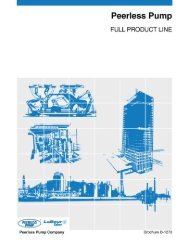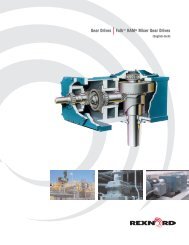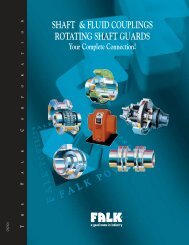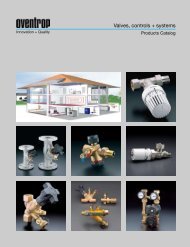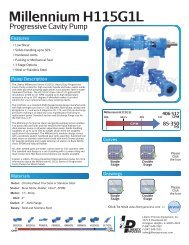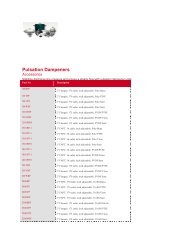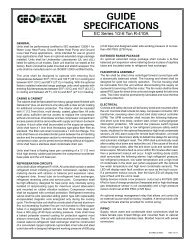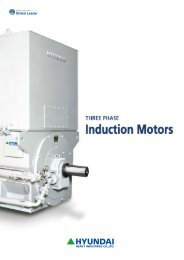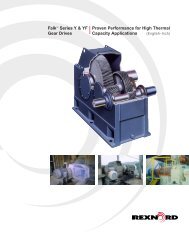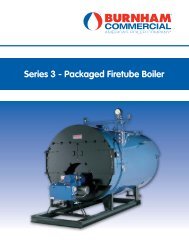Sage 1a Controller - Categories On Thermal Solutions Products LLC ...
Sage 1a Controller - Categories On Thermal Solutions Products LLC ...
Sage 1a Controller - Categories On Thermal Solutions Products LLC ...
You also want an ePaper? Increase the reach of your titles
YUMPU automatically turns print PDFs into web optimized ePapers that Google loves.
Configuration & Tuning<br />
Setup Menu (Continued)<br />
No. Range / Choices Parameter and Description<br />
61 0 to 10000<br />
Mixing Valve P<br />
Proportional Gain value for boiler Inlet temperature sensor control mode.<br />
A larger gain value results in tighter, more active, PID control. Gain is the<br />
primary PID modulation rate tuning adjustment and provides the<br />
immediate mixing valve modulation response.<br />
62 0 to 10000<br />
63 0 to 10000<br />
64 0 to 10000<br />
65 0 to 10000<br />
66 0 to 10000<br />
Pick a gain based on the desired initial response. The mixing valve can<br />
oscillate if the Proportional Gain is too large.<br />
Mixing Valve I<br />
Integral gain value for boiler inlet temperature sensor control mode. A<br />
smaller value makes the Integral ramp in less time (i.e., faster). Integral is<br />
a secondary PID modulation rate tuning adjustment that ramps the output<br />
over time (typically minutes).<br />
Based on the selected Mixing Valve P, select the corresponding (from<br />
table on previous page) Integral value. The mixing valve can oscillate if<br />
the Integral time is too small.<br />
Mixing Valve D<br />
The Derivative gain value for boiler inlet temperature sensor control mode.<br />
A larger Derivative gain value produces a larger PID output contribution<br />
proportional to the rate of change of the error (Setpoint – Boiler Inlet<br />
Temperature). When set equal to zero it has no effect on the output.<br />
Max Delta T P<br />
Proportional Gain value for boiler differential (boiler outlet minus inlet<br />
temperature sensor) temperature control mode. Refer to Local PID P for<br />
explanation.<br />
Max Delta T I<br />
Integral Gain value for boiler differential (boiler outlet minus inlet<br />
temperature sensor) temperature control mode. Refer to Local PID I for<br />
explanation.<br />
Max Delta T D<br />
Derivative Gain Term for boiler differential (boiler outlet minus inlet<br />
temperature sensor) temperature control mode. Refer to Local PID D for<br />
explanation.<br />
TSBC Instruction Manual Page 34 of 48




